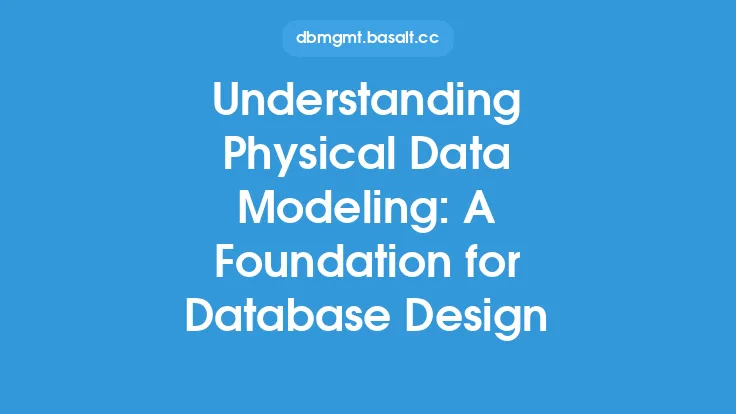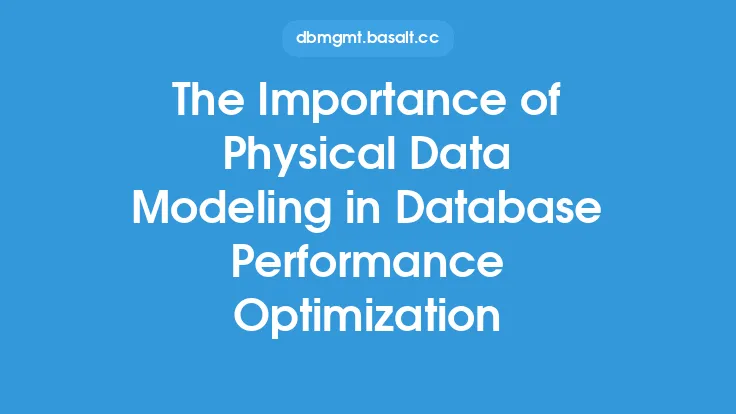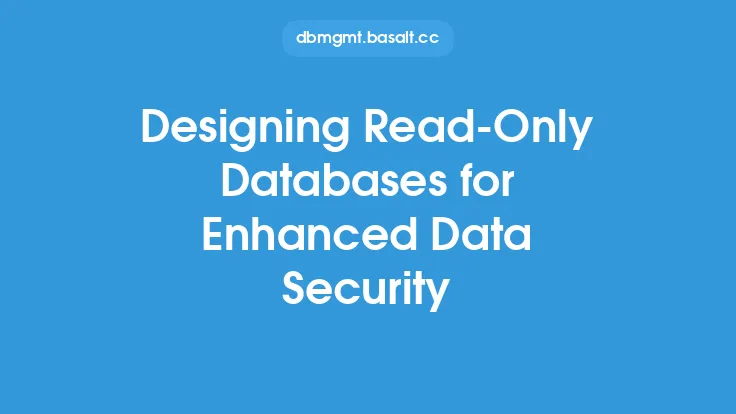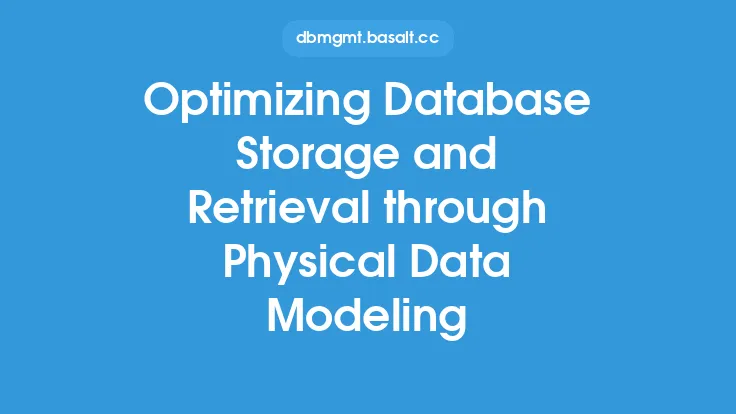Physical data modeling is a crucial step in the database design process that involves creating a detailed representation of the physical structure of a database. It takes into account the specific database management system (DBMS) being used, as well as the hardware and software constraints of the system. One of the key benefits of physical data modeling is that it enables database administrators to implement robust security measures to protect sensitive data. In this article, we will explore the various physical data modeling techniques that can be used to enhance database security.
Introduction to Physical Data Modeling for Security
Physical data modeling for security involves designing a database that is secure, scalable, and performant. It requires a deep understanding of the database management system, as well as the security requirements of the organization. The goal of physical data modeling for security is to create a database that is resistant to unauthorized access, data breaches, and other security threats. This can be achieved by using various physical data modeling techniques, such as data encryption, access control, and auditing.
Data Encryption Techniques
Data encryption is a critical component of physical data modeling for security. It involves converting plaintext data into unreadable ciphertext to prevent unauthorized access. There are several data encryption techniques that can be used, including symmetric key encryption, asymmetric key encryption, and hash functions. Symmetric key encryption uses the same key for both encryption and decryption, while asymmetric key encryption uses a pair of keys: one for encryption and another for decryption. Hash functions, on the other hand, use a one-way algorithm to create a fixed-length string of characters that represents the data.
Access Control Mechanisms
Access control is another important aspect of physical data modeling for security. It involves granting or denying access to database objects based on user identity, role, or privilege. There are several access control mechanisms that can be used, including authentication, authorization, and auditing. Authentication involves verifying the identity of users, while authorization involves granting or denying access to database objects based on user privileges. Auditing involves tracking and monitoring database activity to detect and prevent security breaches.
Database Design Considerations
When designing a database for security, there are several considerations that must be taken into account. These include data normalization, data denormalization, and data partitioning. Data normalization involves organizing data into tables to minimize data redundancy and improve data integrity. Data denormalization, on the other hand, involves intentionally deviating from normalization rules to improve performance. Data partitioning involves dividing large tables into smaller, more manageable pieces to improve performance and reduce storage requirements.
Indexing and Partitioning Techniques
Indexing and partitioning are two techniques that can be used to improve database performance and security. Indexing involves creating a data structure that improves the speed of data retrieval, while partitioning involves dividing large tables into smaller, more manageable pieces. There are several indexing techniques that can be used, including B-tree indexing, hash indexing, and full-text indexing. Partitioning techniques include range partitioning, list partitioning, and hash partitioning.
Security Threats and Vulnerabilities
Despite the best efforts of database administrators, security threats and vulnerabilities can still occur. These include SQL injection attacks, cross-site scripting (XSS) attacks, and denial-of-service (DoS) attacks. SQL injection attacks involve injecting malicious SQL code into a database to extract or modify sensitive data. XSS attacks involve injecting malicious code into a web application to steal user data or take control of user sessions. DoS attacks involve flooding a database with traffic to make it unavailable to users.
Best Practices for Physical Data Modeling
To ensure the security and integrity of a database, there are several best practices that must be followed. These include using secure passwords, encrypting sensitive data, and regularly updating database software. Secure passwords involve using a combination of uppercase and lowercase letters, numbers, and special characters to prevent unauthorized access. Encrypting sensitive data involves using data encryption techniques to protect sensitive data from unauthorized access. Regularly updating database software involves applying patches and updates to prevent security vulnerabilities.
Conclusion
Physical data modeling is a critical step in the database design process that involves creating a detailed representation of the physical structure of a database. By using various physical data modeling techniques, such as data encryption, access control, and auditing, database administrators can implement robust security measures to protect sensitive data. Additionally, by following best practices, such as using secure passwords, encrypting sensitive data, and regularly updating database software, database administrators can ensure the security and integrity of a database. By taking a proactive approach to physical data modeling, organizations can protect their sensitive data and prevent security breaches.





